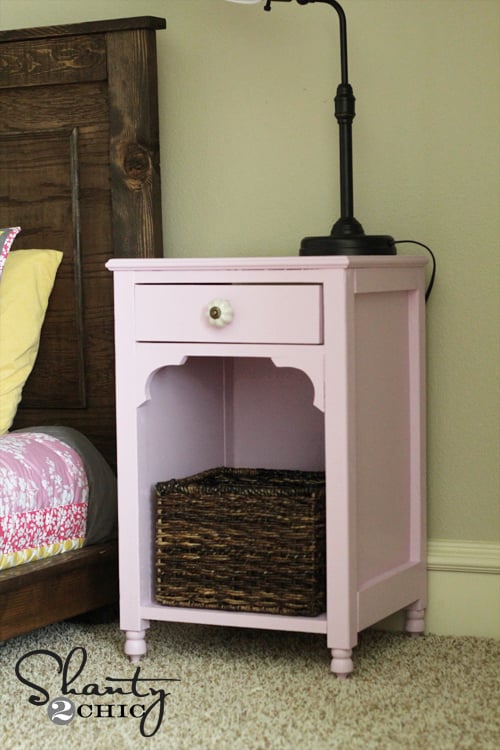
Build a pretty nightstand! Free plans!
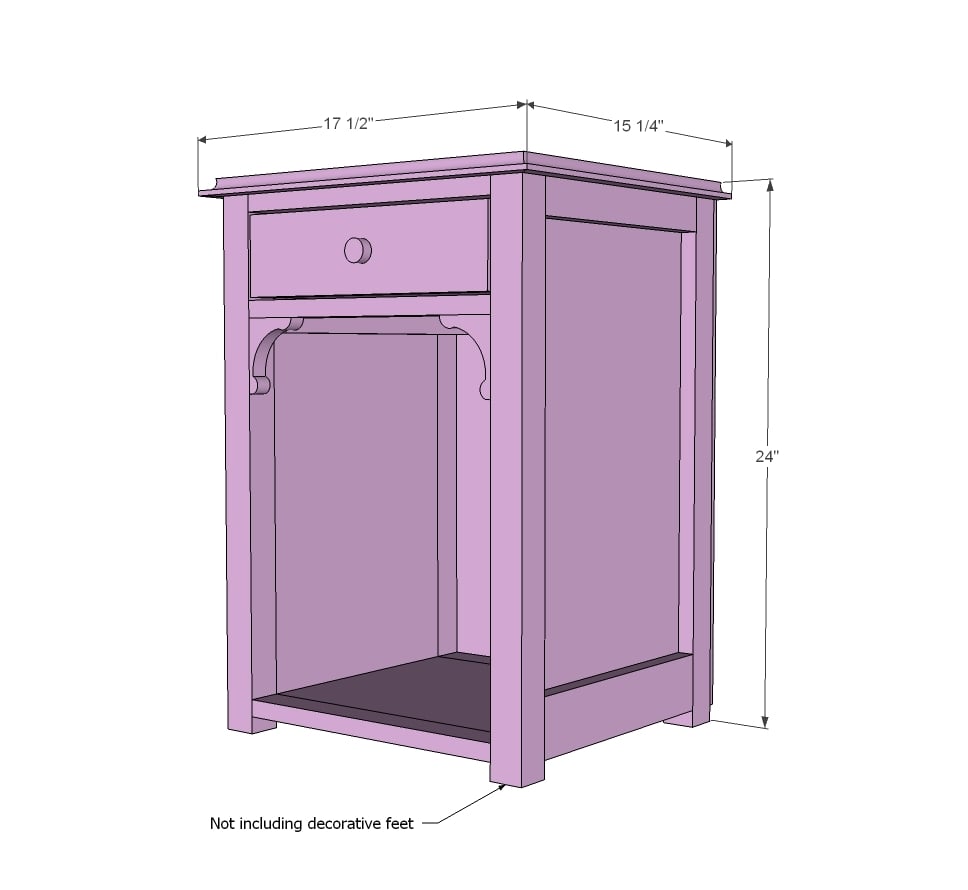
Preparation
2 – 1x2 @ 8 feet long
1 – 1x12 @ 8 feet long
1 – 1x3 @ 8 feet long
1 – 2x2 @ 8 feet long
1 – 1x4 @ 2 feet long
1 – ¼ sheet ¼” plywood
2 – 1x2 @ 11 ¼”
2 – 1x3 @ 11 ¼”
2 – 1x12 @ 22 ½”
4 – 2x2 @ 23 ¼”
1 – 1x12 @ 13”
5 – 1x2 @ 13”
2 – 1x2 @ 16”
1 – 1x12 @ 16”
2 – 1x4 @ 3 ½” (decorative moulding)
Edge Moulding is cut to fit
1 – ¼” plywood@ 16” x 23 ¼”
DRAWER
2 – 1x3 @ 11 ¼”
2 – 1x3 @ 13 ½”
1 – ¼” plywood @ 12 ¾” x 13 ½”
1 – 1x4 @ 12 ¾” (false face)
2 – 1x2 @ 13 ½” (drawer slides)
Please read through the entire plan and all comments before beginning this project. It is also advisable to review the Getting Started Section. Take all necessary precautions to build safely and smartly. Work on a clean level surface, free of imperfections or debris. Always use straight boards. Check for square after each step. Always predrill holes before attaching with screws. Use glue with finish nails for a stronger hold. Wipe excess glue off bare wood for stained projects, as dried glue will not take stain. Be safe, have fun, and ask for help if you need it. Good luck!
Instructions
Step 1
Step 2
Step 6
Step 7
It is always recommended to apply a test coat on a hidden area or scrap piece to ensure color evenness and adhesion. Use primer or wood conditioner as needed.


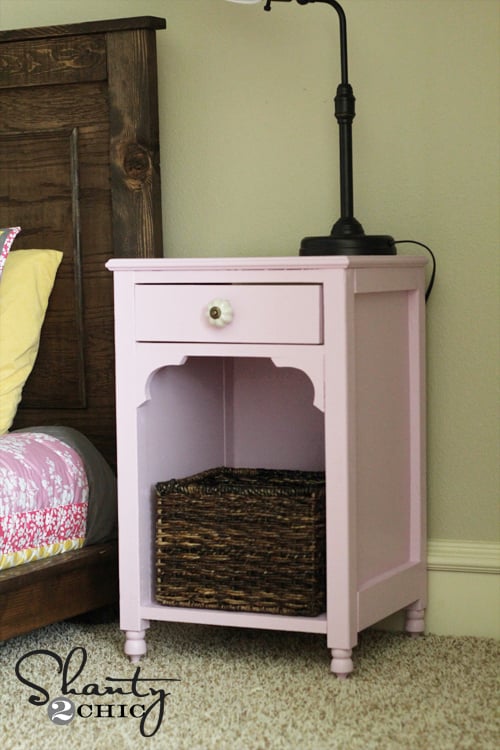
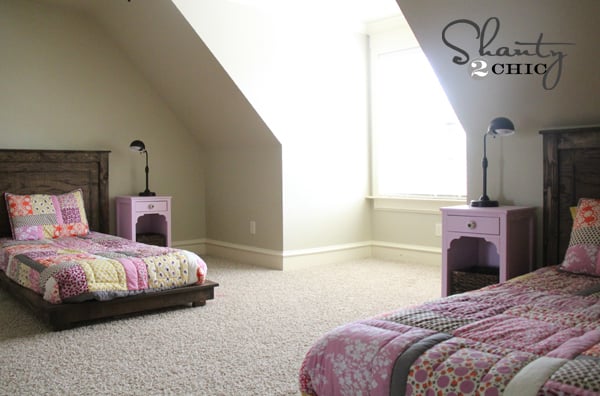
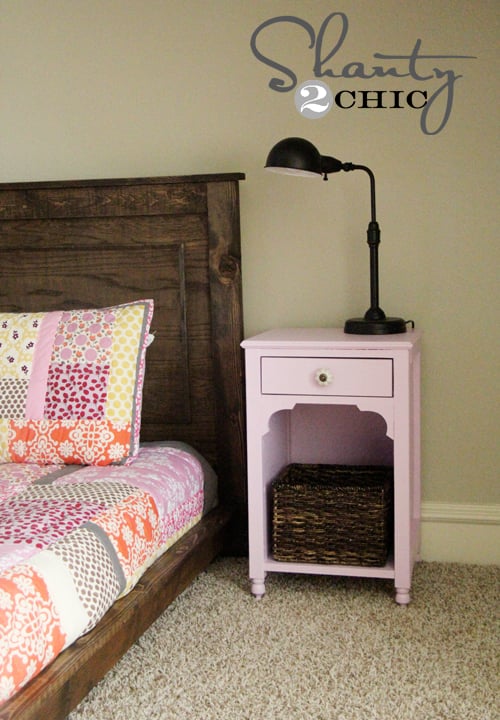
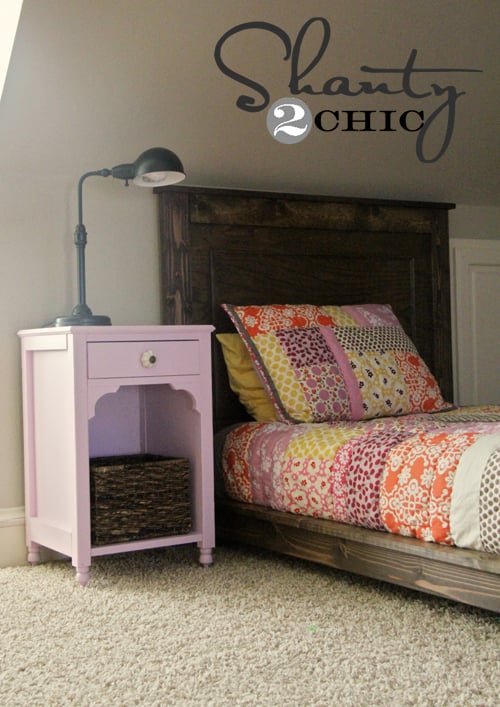
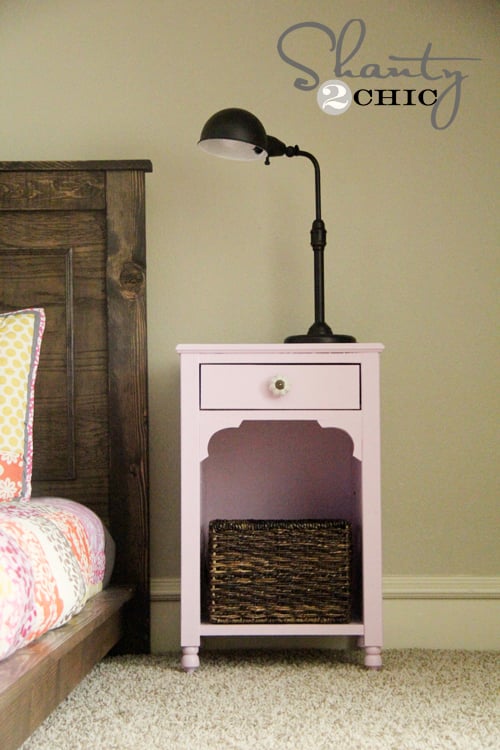

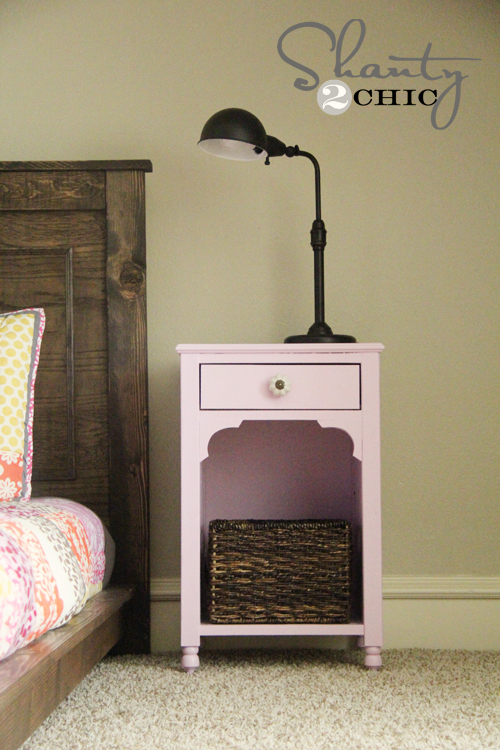










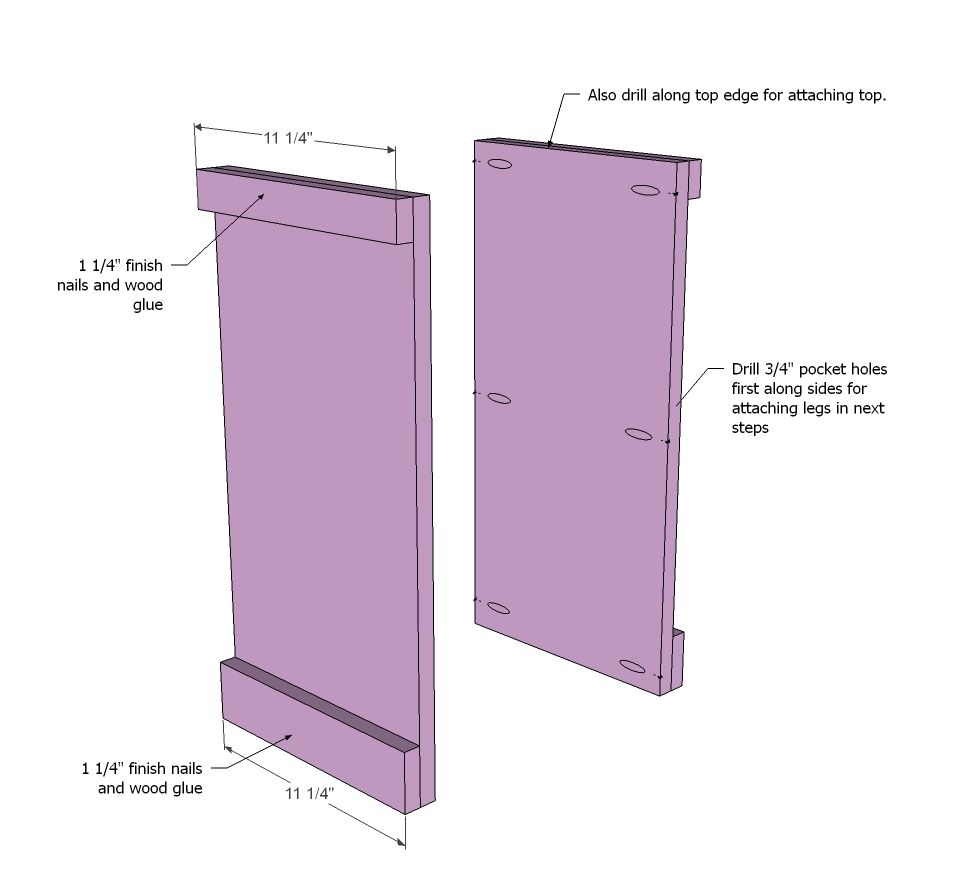

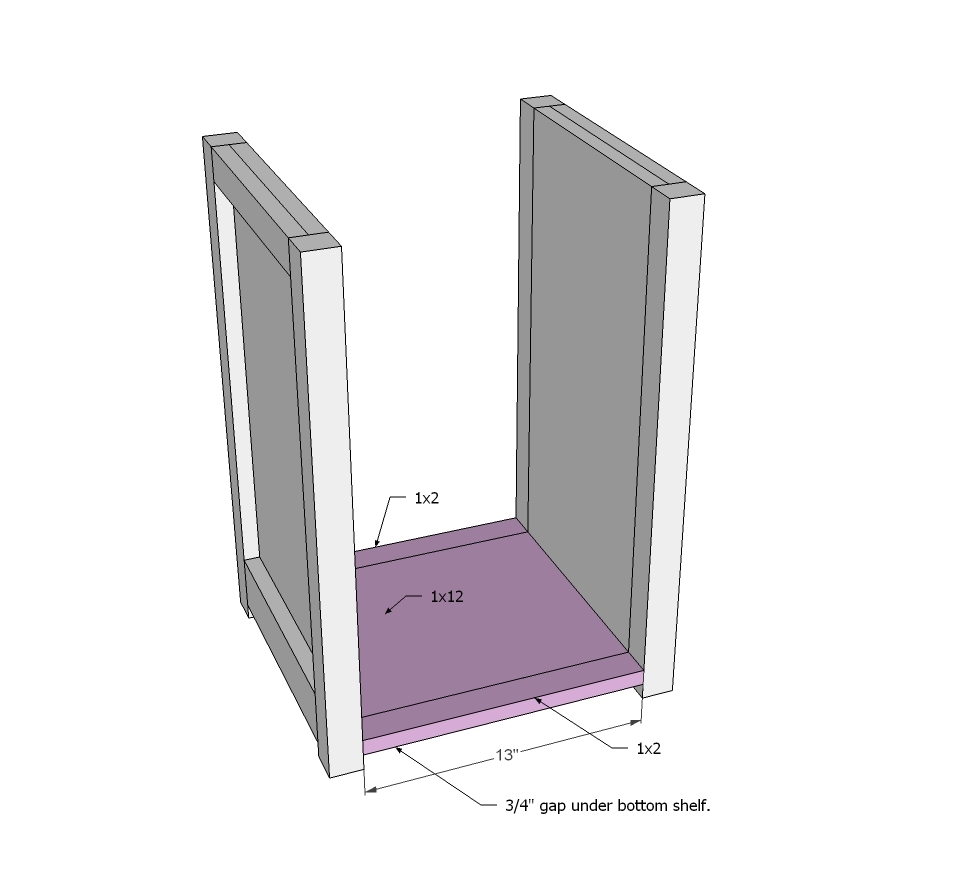

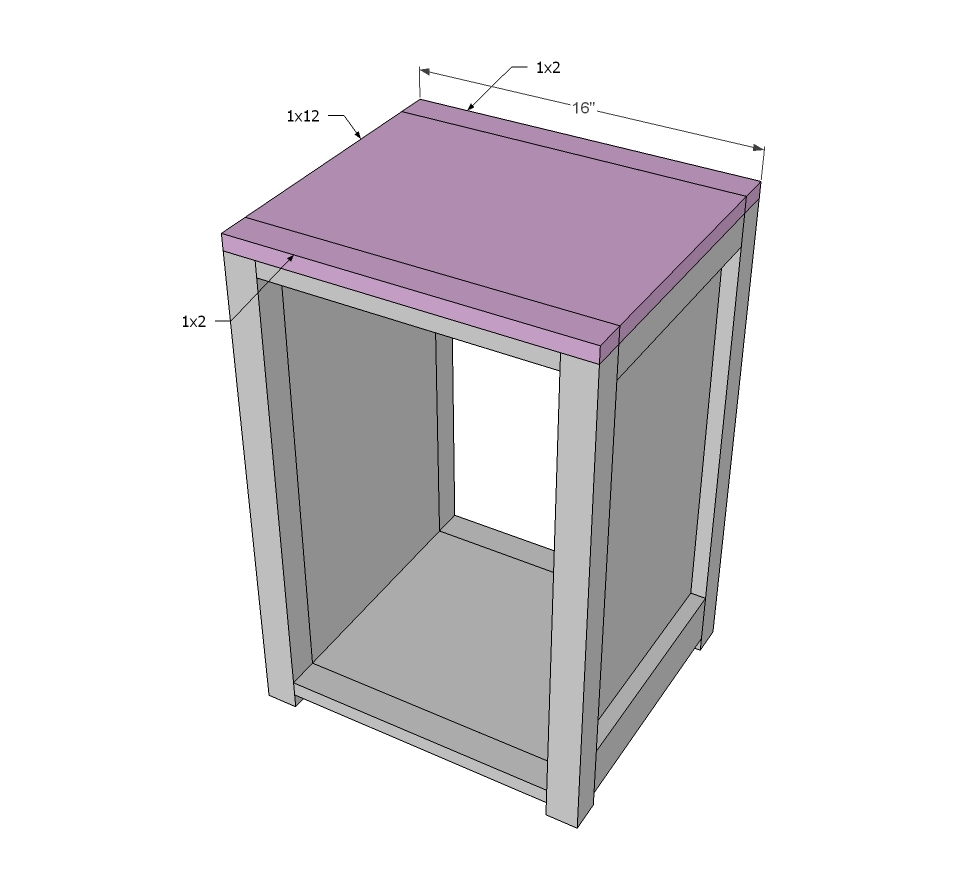
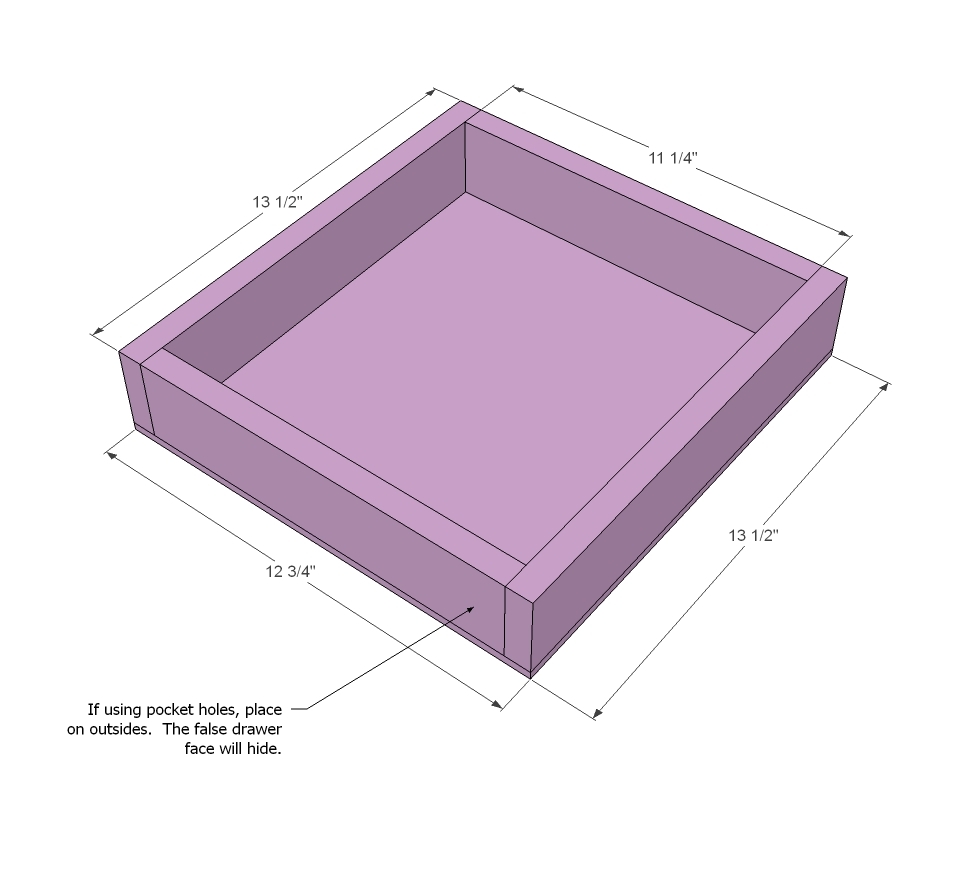
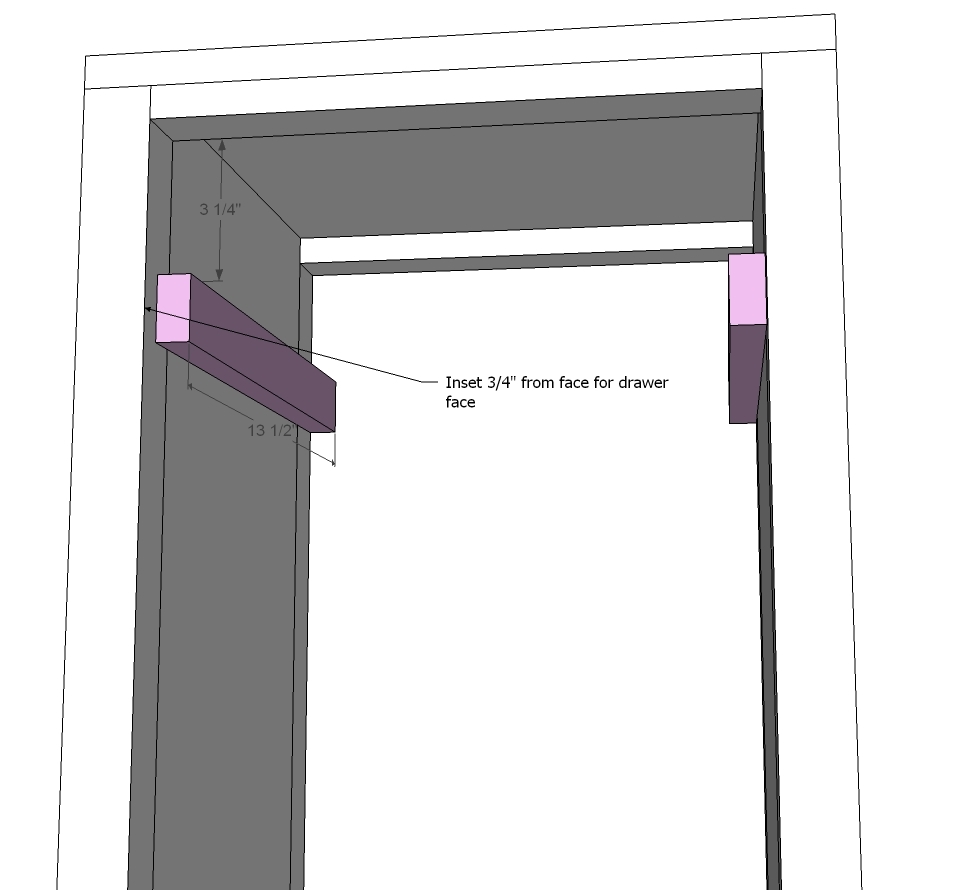
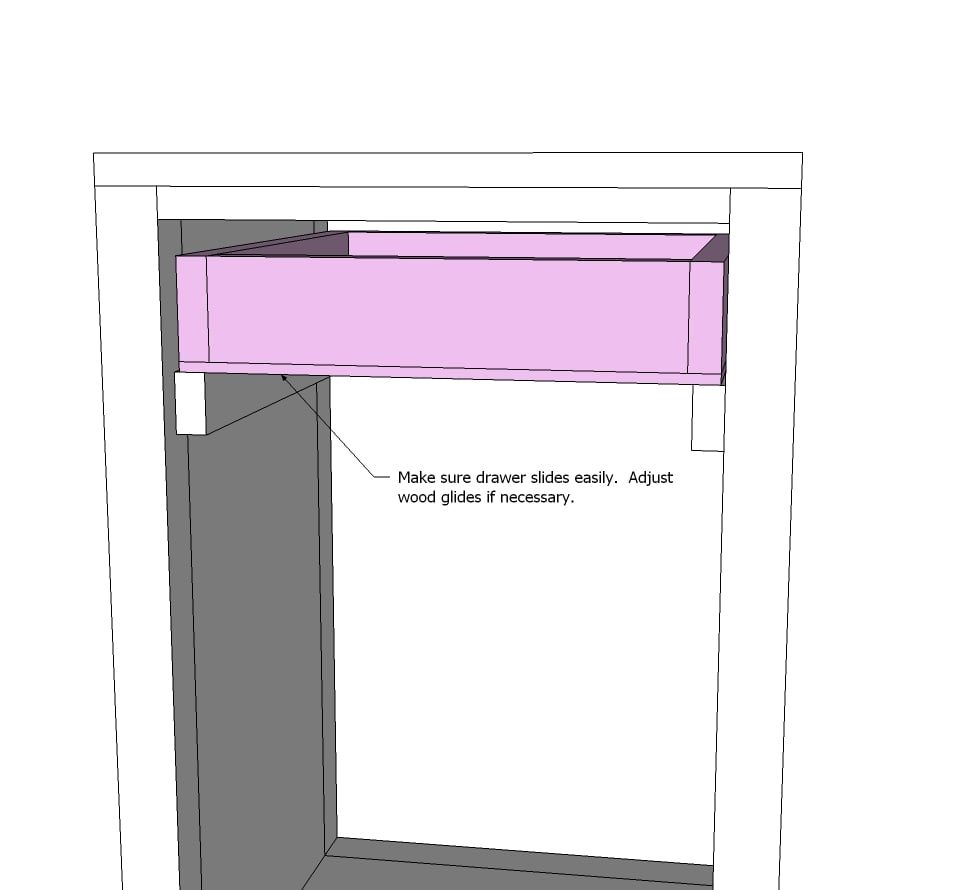
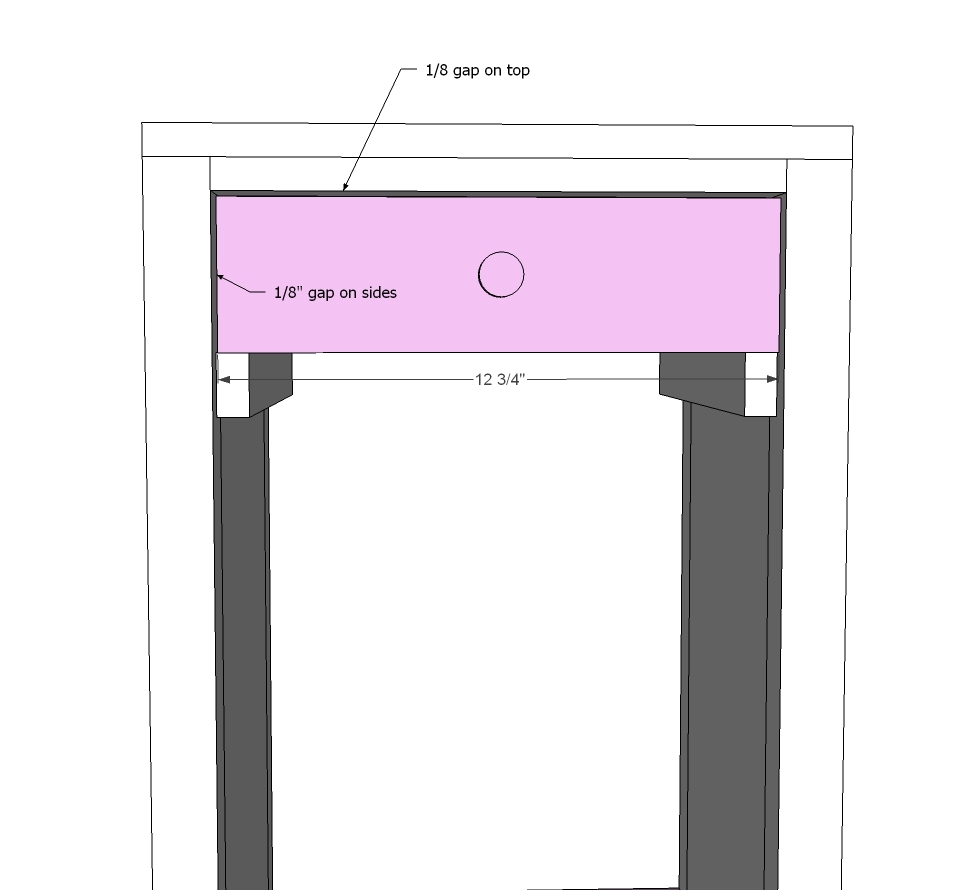
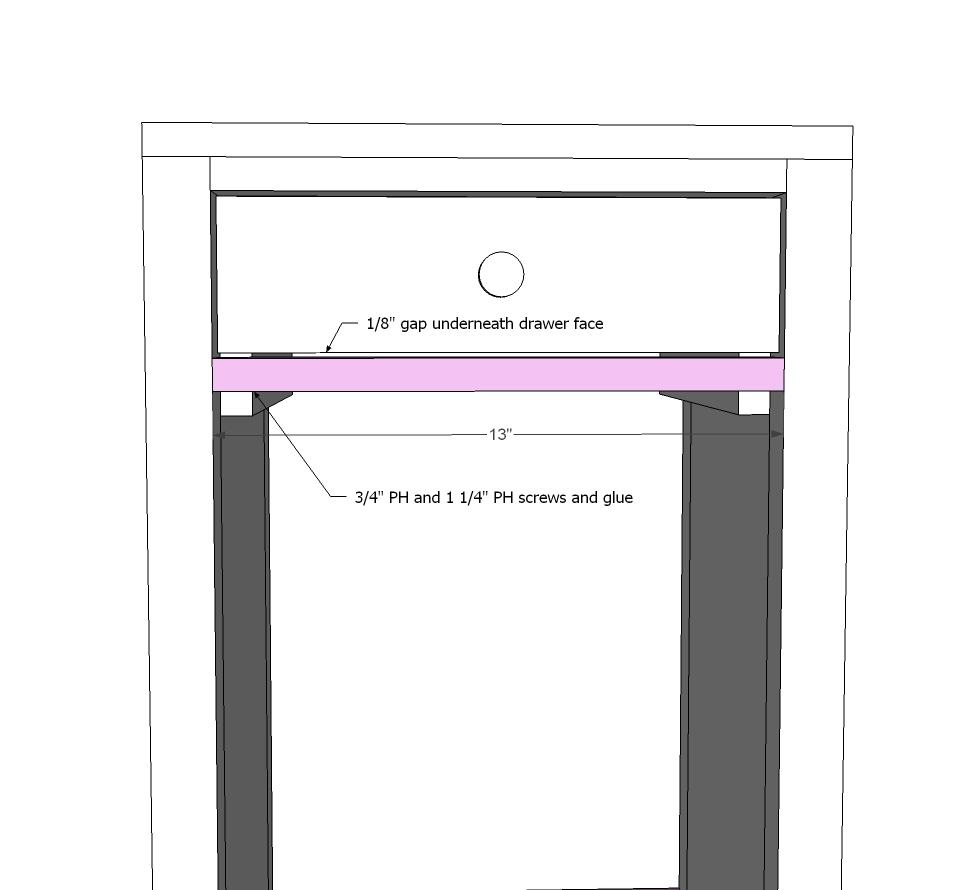
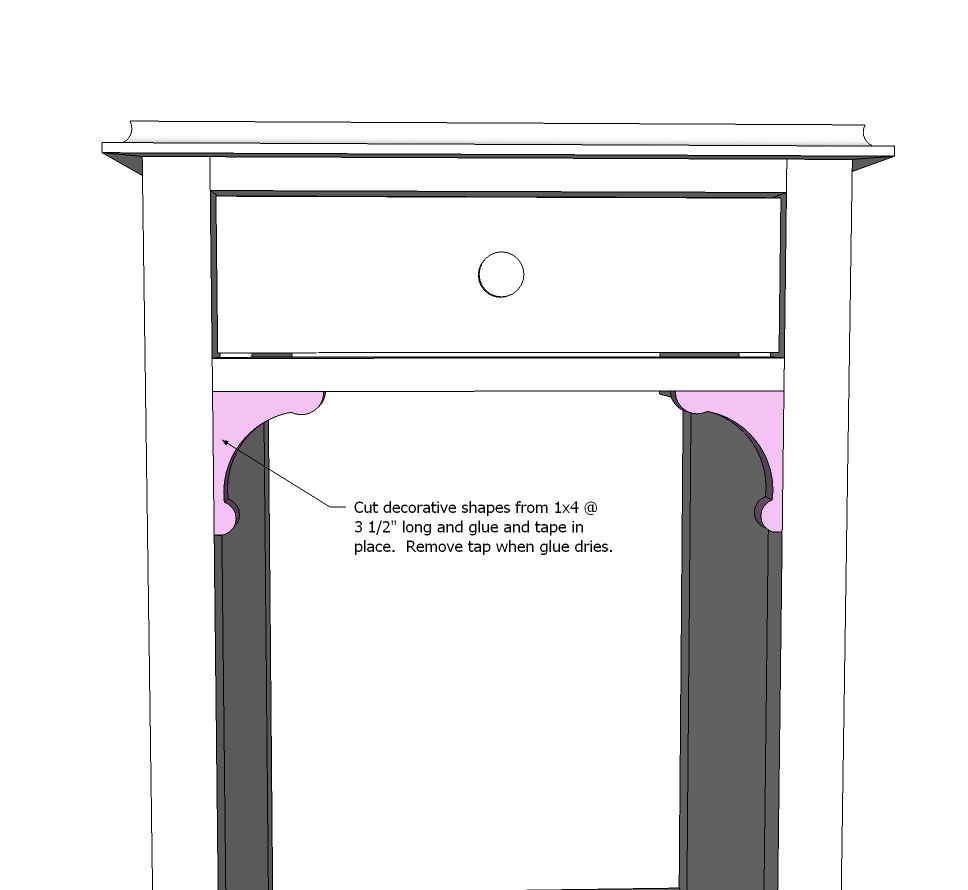
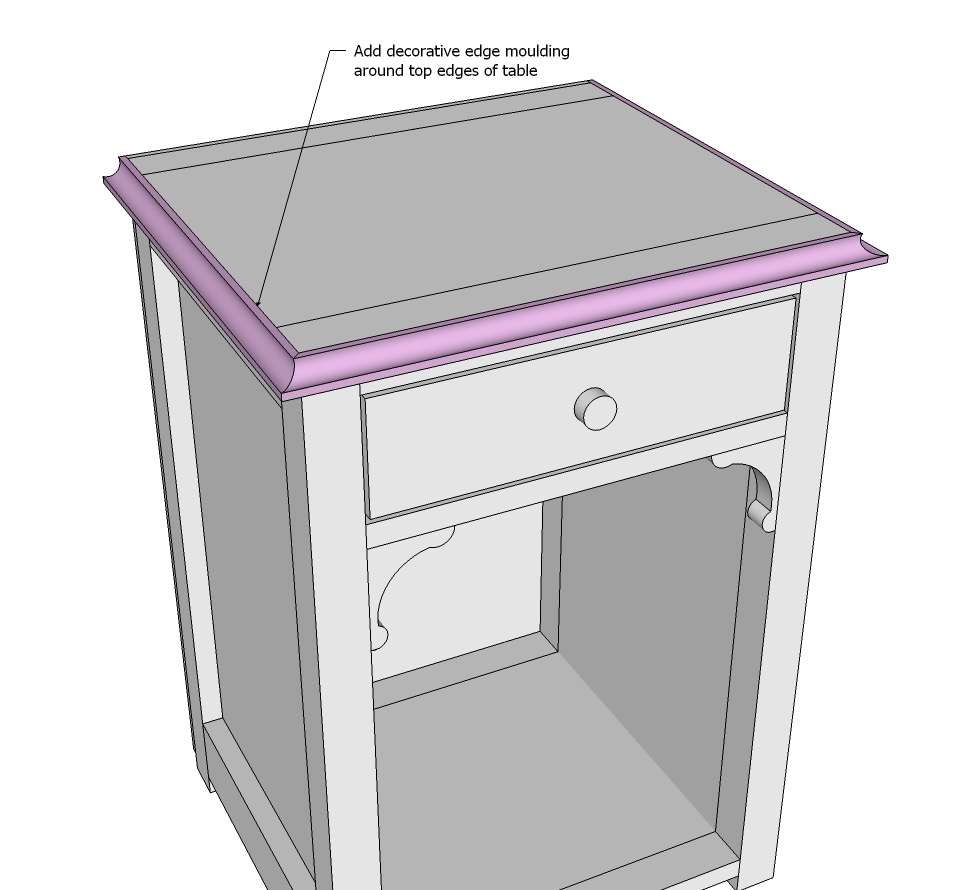
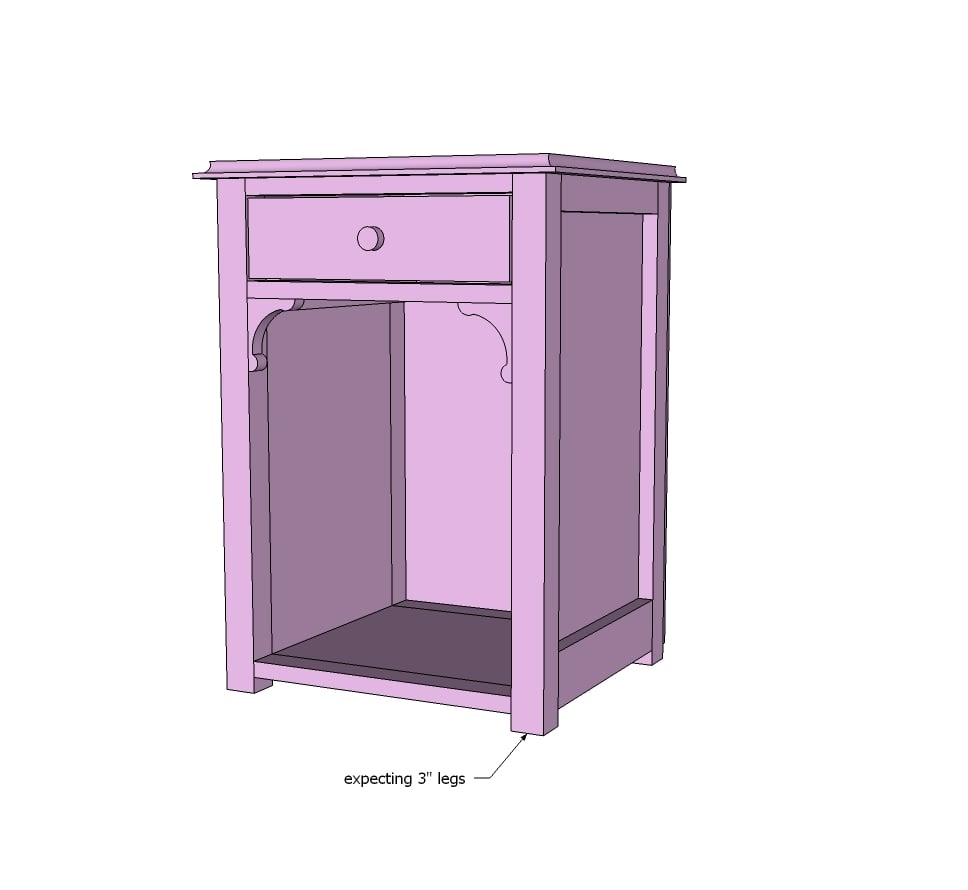
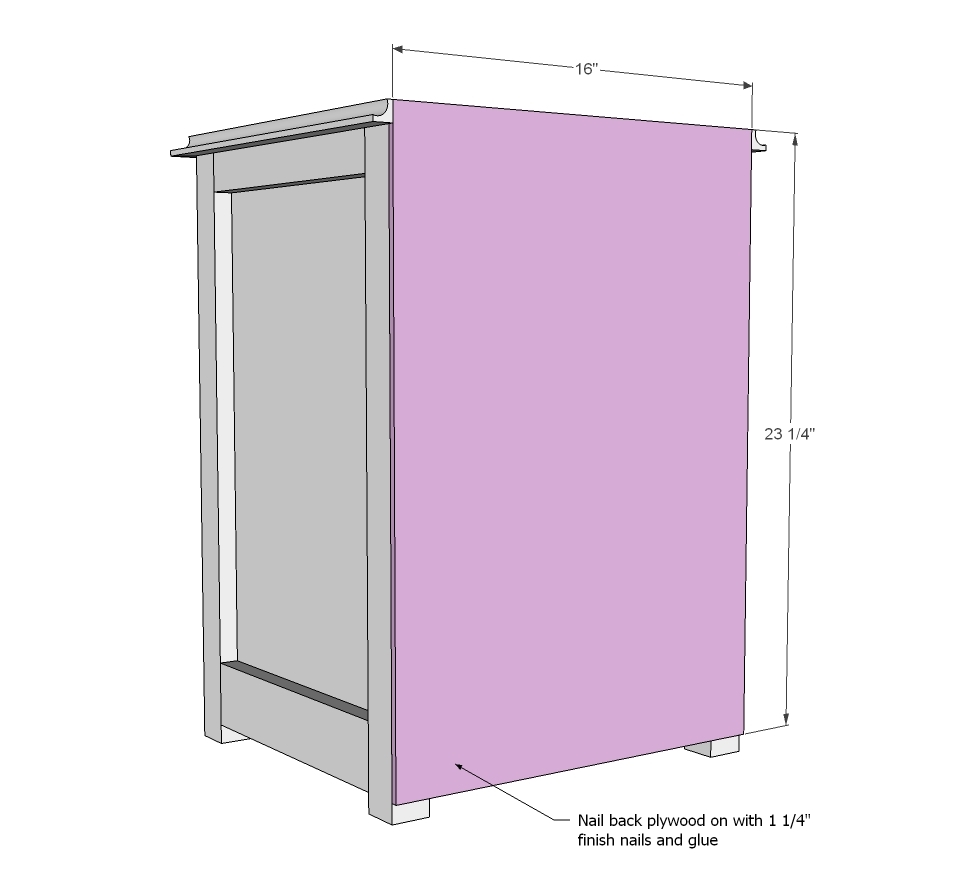
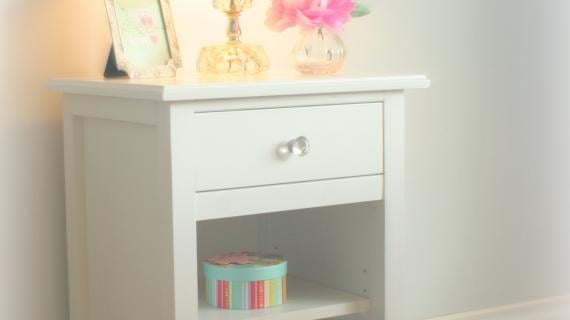
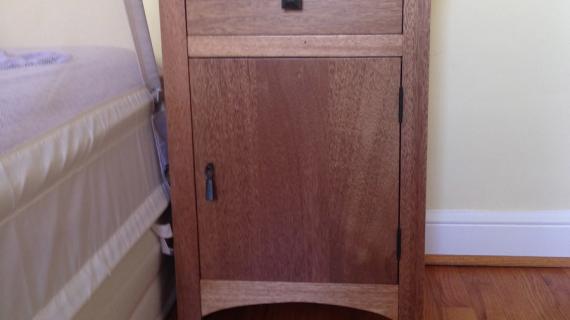
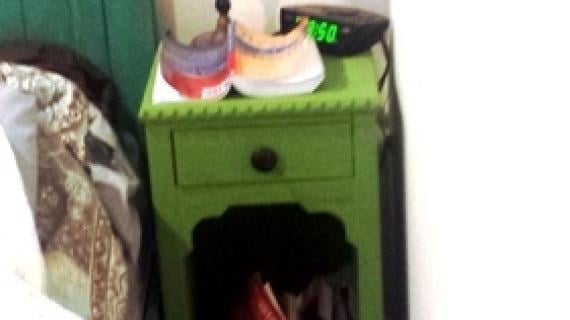
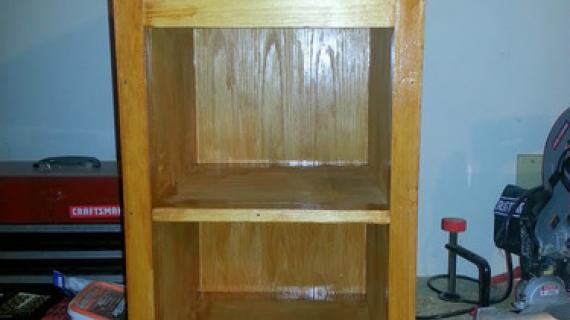

Comments
Beth Baker (not verified)
Tue, 05/08/2012 - 22:44
Handmade furniture for shelter makeovers
Hi Ana,
I listened to your webinar tonight, it was very inspiring. Thank you for taking the time to speak about blogging and your furniture projects. My main interest is the furniture plans. I run a nonprofit that furnishes and decorates transitional homeless shelters for woman and children using donated furnishings. I have been thinking, for sometime, about building our own furniture. Your have inspired me to start doing so, and I plan on starting with the Julia night stand. We are always in need on night stands, end tables and coffee tables, among other things.
Thanks for the spark you created in me.
Sincerely,
Beth Baker
[email protected] (not verified)
Wed, 05/09/2012 - 09:51
Error
TCPDF ERROR: [Image] Unable to get image: file:///home/anawhite/public_html/dev/acquia-drupal-1.2.33/sites/default/files/ana-white-darren-rowse-podc.jpg?1336504590
[email protected] (not verified)
Thu, 05/24/2012 - 09:10
PDF
TCPDF ERROR: [Image] Unable to get image: file:///home/anawhite/public_html/dev/acquia-drupal-1.2.33/sites/default/files/ana-white-darren-rowse-podc.jpg?1336504590
mcondon
Sun, 10/02/2016 - 10:39
Nightstand decorative feet
We like the decorative feet you used and would like to incorporate those on the nightstands I am building for our grandaughters. Can you recommend a source. Hopefully on-line as we are a long ways from any big stores.
This is my first pocket hole project.....Love it! And thanks for the great plans.
Michael
In reply to Nightstand decorative feet by mcondon
Ana White
Mon, 10/03/2016 - 06:30
Take a look at this post
Take a look at this post Michael, have fun!
http://www.shanty-2-chic.com/2012/05/diy-julia-nightstand.html